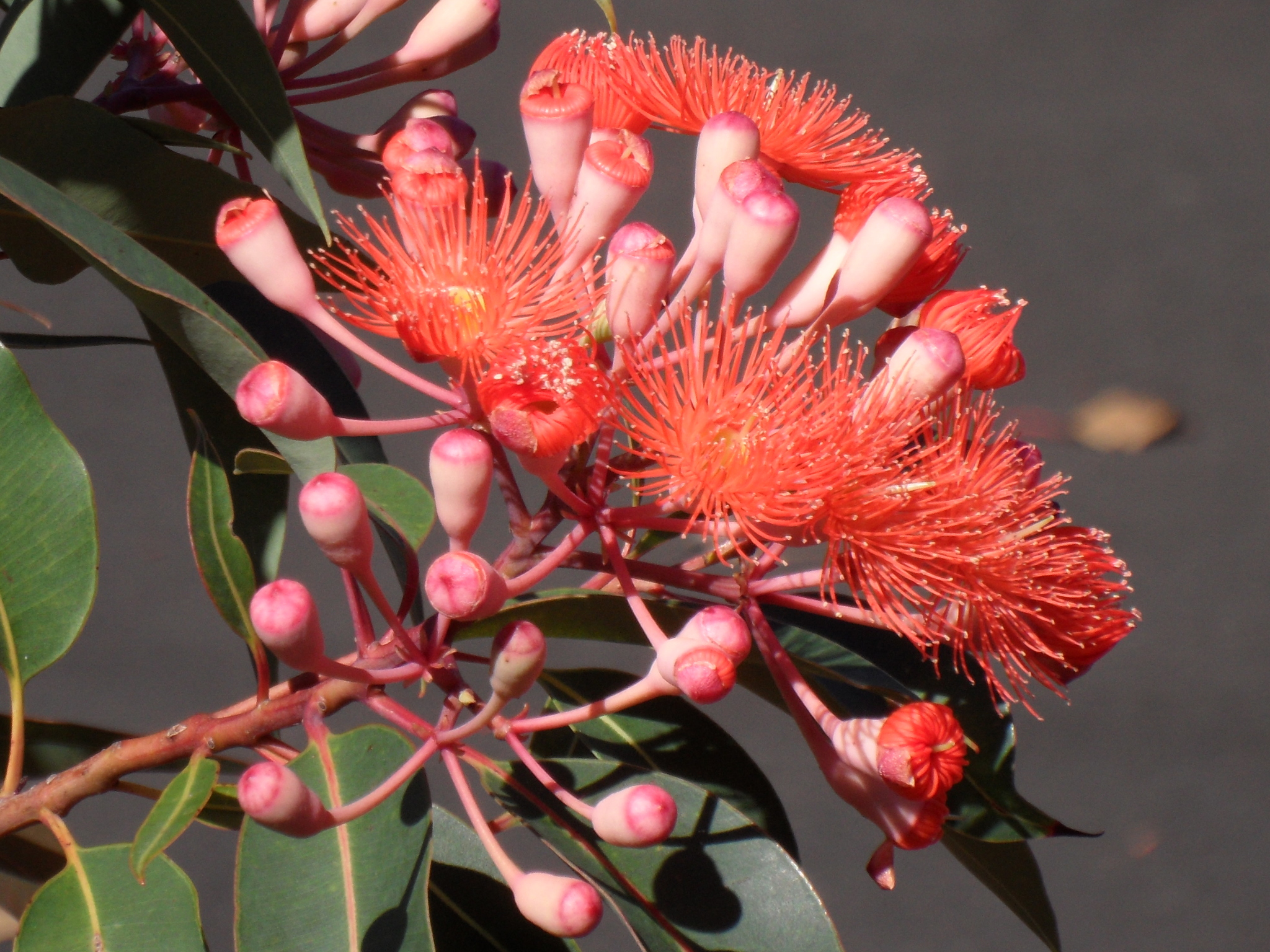
Corymbia has the general appearance of a eucalypt and has a lid-like calyx (calyptra or operculum), unicellular hairs and alternate leaves, although the more readily apparent characters are the combination of terminal flower panicles, urn-shaped fruits, rough, flaky bark and red sap (although some species of Eucalyptus share these characters). Much of the debate about the recognition of this genus rests on the relative evolutionary positions of Eucalyptus, Angophora and Corymbia and whether they should stay separate (and possibly be split further) or all 'lumped' together in Eucalyptus. Corymbia is considered to be more closely related to Angophora than Eucalyptus. The resolution of this debate is likely to take some time.
113 species, mostly tropical and therefore confined largely to the northern part of the Australian continent.
Bark generally tessellated (not in C. citriodora or C. maculata); flowers compound, in branching clusters (corymbs); fruits mostly urn-shaped.
Hill & Johnson (1995).
Source: (2002). Myrtaceae. In: . Horticultural Flora of South-eastern Australia. Volume 3. Flowering plants. Dicotyledons. Part 2. The identification of garden and cultivated plants. University of New South Wales Press.

There is a range of white to pink and carmine flower colour variants that are putative hybrids between C. calophylla and C. ficifolia. Some of these were originally listed as Eucalyptus varieties under one or other species. They include: E. calophylla var. hawkeyi Blakely, commemorating George Hawkey, one-time Curator of the Sydney Royal Bot. Gds, said to be an improved form with larger rosy carmine flowers; E. calophylla var. rubra Guilfoyle; E. ficifolia var. alba Guilfoyle, with white flowers; E. ficifolia var. carminea Blakely, regarded by Pryor & Johnson in A Classification of the Eucalypts (1971) as a minor variant and listed by Chippendale in Flora of Australia, Vol. 19, as a probable hybrid; C. ficifolia var. rosea Guilfoyle. In the wild C. calophylla varies in flower colour from white to pale pink, while C. ficifolia, which usually has crimson flowers, may have near white flowers on cultivated plants. The old botanical names are no longer used and currently there appears to be little attempt to find names for colour variants apart from the pink-flowered 'Rosea'.
Pink-flowered Marri (Rose-flowered Bloodwood). Lord and Willis (1982) state that the numerous specimens of this tree are reported to have sprung from a single tree of C. calophylla that produced pink flowers at Melbourne Bot. Gds in 1893. They have been widely used for street planting, but seedlings do not grow entirely true to colour and may vary from pale pink to rosy purple. Syn. Eucalyptus calophylla var. rosea Guilfoyle, E. ficifolia 'Guilfoylei'.